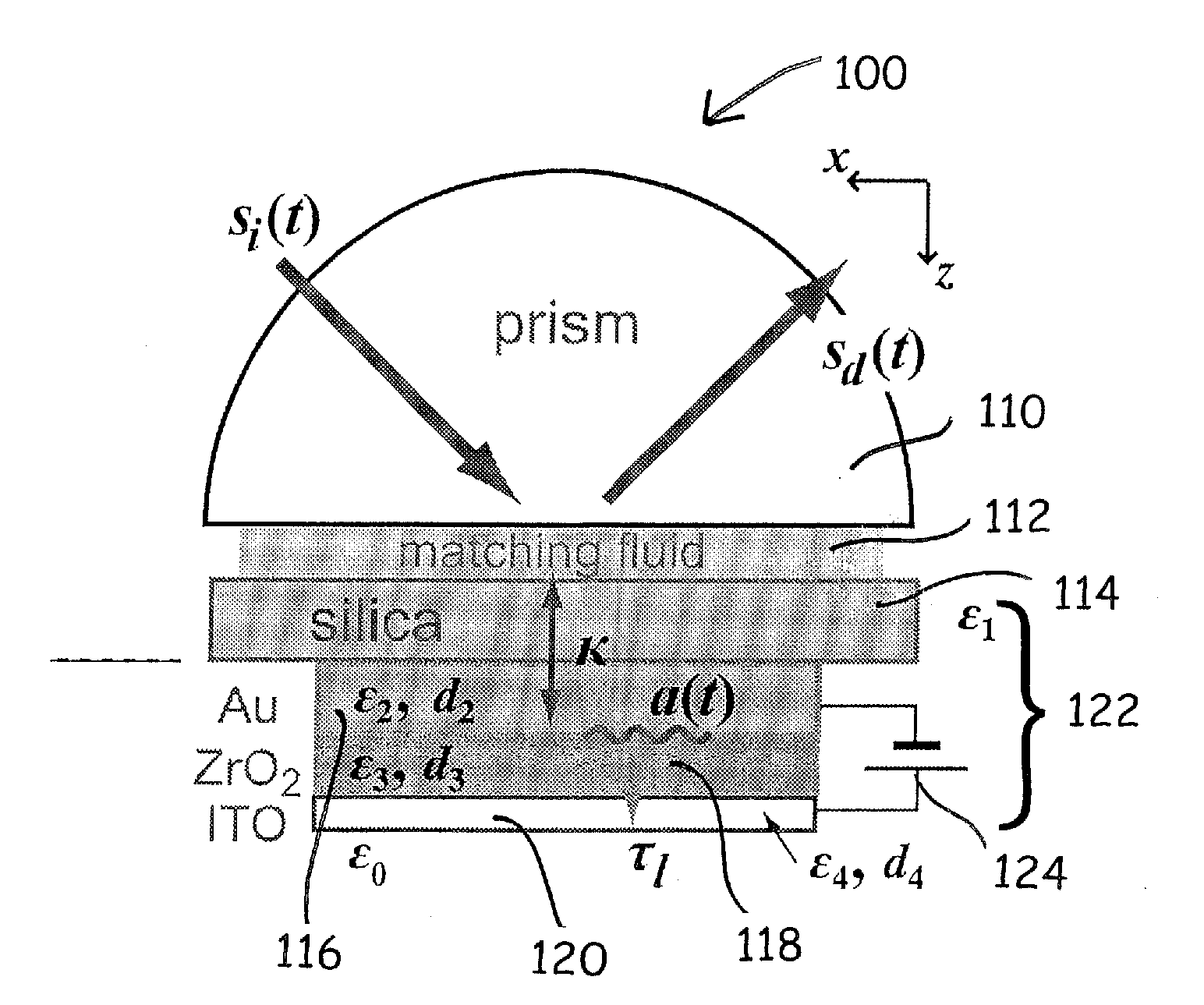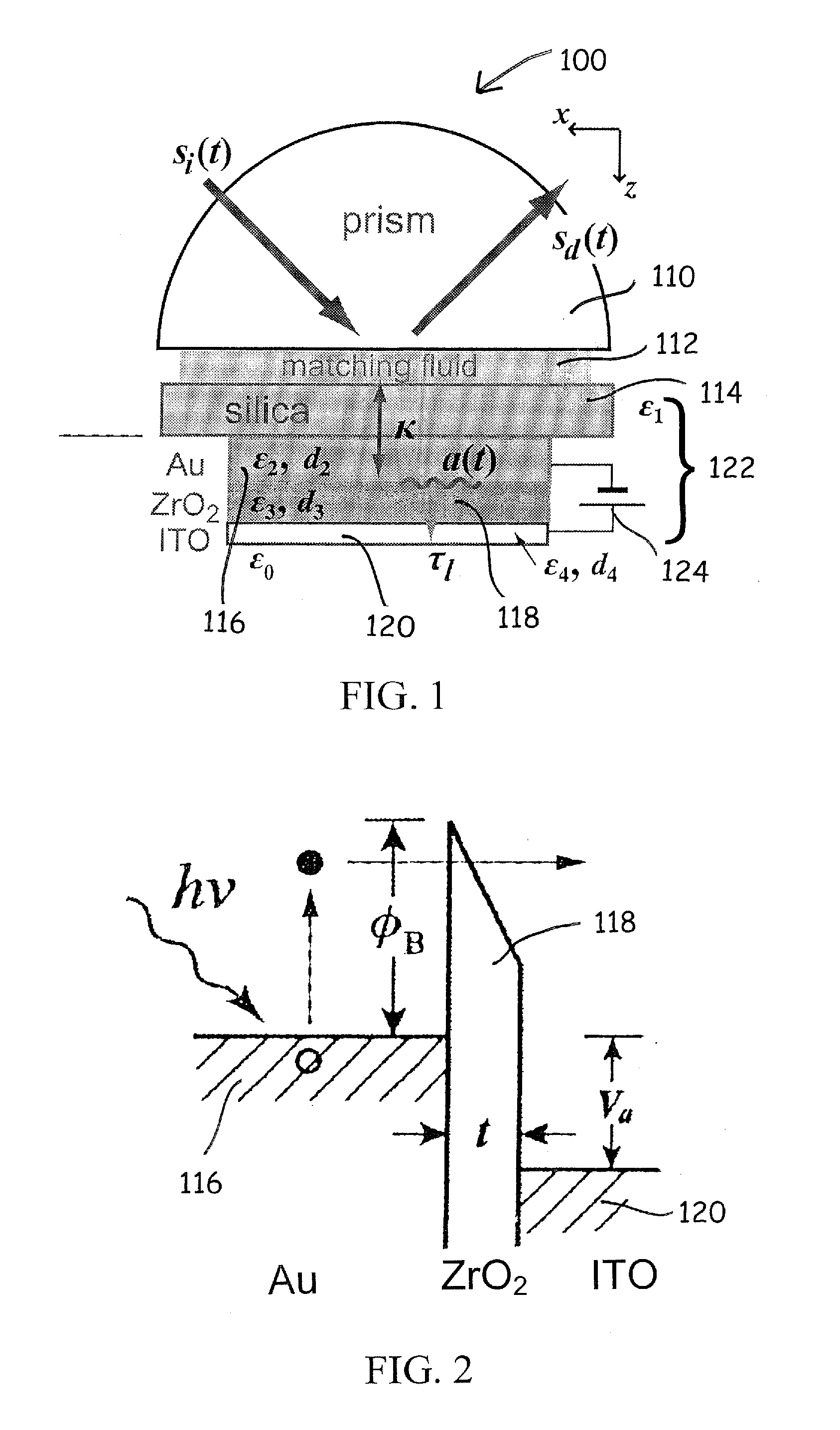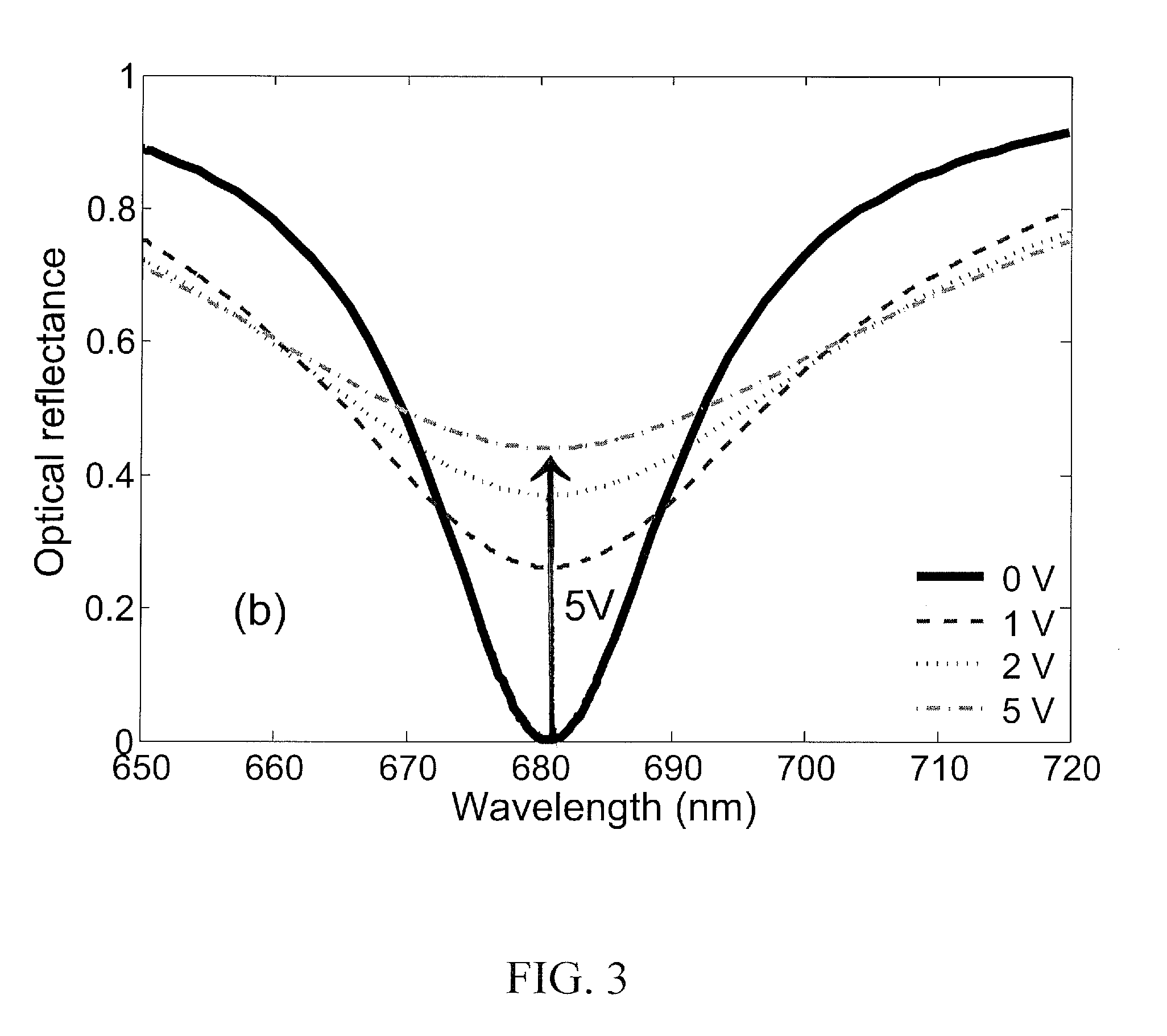Surface plasmon optical modulator
a surface plasmon and optical modulator technology, applied in non-linear optics, instruments, optics, etc., can solve the problems of destructively interfering with the reflection at the optical element-metal interface, and achieve the effects of reducing the magnitude of surface plasmon back-scattered, improving the modulation depth of the device, and increasing the probability of electron tunneling
- Summary
- Abstract
- Description
- Claims
- Application Information
AI Technical Summary
Benefits of technology
Problems solved by technology
Method used
Image
Examples
worked example
[0048]The following description section is presented to enable one to make and use the invention.
[0049]Referring to FIG. 1, the surface plasmon optical modulator starts from a silica wafer 114 cleaned by common RCA procedure. Overlying a major surface of the substrate is a hetero-structure including subsequent deposition of Au, ZrO2, and ITO by one of many known techniques to form a metal-insulator-semiconductor tunneling diode. It should be understood that tunneling diode could comprise a sandwich of many appropriate insulators wherein it can be used to affect the barrier characteristics described in the patent description. Electrical contacts, from a low loss metal such as Al, Cu, Au, or W, is formed over layer 116 and layer 120. Means such as a battery 124 and switch are connected between layer 116 and 120 for selectively establishing an electric field normal to the planes of layers 116, 118, 120 in MIS diode 122.
[0050]The device 122 is mounted to a semi-cylindrical prism 110 wit...
PUM
| Property | Measurement | Unit |
|---|---|---|
| voltage | aaaaa | aaaaa |
| voltage | aaaaa | aaaaa |
| thickness | aaaaa | aaaaa |
Abstract
Description
Claims
Application Information
 Login to View More
Login to View More - R&D
- Intellectual Property
- Life Sciences
- Materials
- Tech Scout
- Unparalleled Data Quality
- Higher Quality Content
- 60% Fewer Hallucinations
Browse by: Latest US Patents, China's latest patents, Technical Efficacy Thesaurus, Application Domain, Technology Topic, Popular Technical Reports.
© 2025 PatSnap. All rights reserved.Legal|Privacy policy|Modern Slavery Act Transparency Statement|Sitemap|About US| Contact US: help@patsnap.com



